Plastic Coaster From Bottle Caps
by impeony in Living > Kitchen
1313 Views, 16 Favorites, 0 Comments
Plastic Coaster From Bottle Caps


When plastic bottles are recycled most people think that only the bottle is used, but did you know that even the caps can have their own uses as well? As plastic pollution is an issue that is increasing significantly every day, I decided to work on a simple project using bottle caps. This can also be made at home if you have the right equipment - Please DO NOT use them for food afterwards!!!!!
Supplies



- Ø20mm HDPE bottle caps x40
- Heat Press / Panini press
- Mould
- Oven
- Heat Proof Gloves
- Spatula
- Bandsaw (optional)
- Sandpaper
Fusion Modelling

I first made a quick model on Fusion to visualise the final product. It will be hexagonal and around 4mm thick.
Sorting Out

I collected 40 bottle caps that are a mixture of red and white ones. I chose these 2 colours for a marbling effect - any colour works as well! (As long as they are of the same material, I used HDPE for this)
You can check the material of the caps on the inside - it is usually stated
Heating the Caps


Place the bottle caps into the heat press and waited for them to melt. For HDPE it works best at around 180°C (356°F). After it is heated for 2 minutes flip it over with a spatula (just like pancakes!). Repeat until it is fully melted.
Heating the Mould

Put the mould into an oven to heat it at the same temperature as the heat press so that it does not cool down as quickly when added to the mould.
Forming

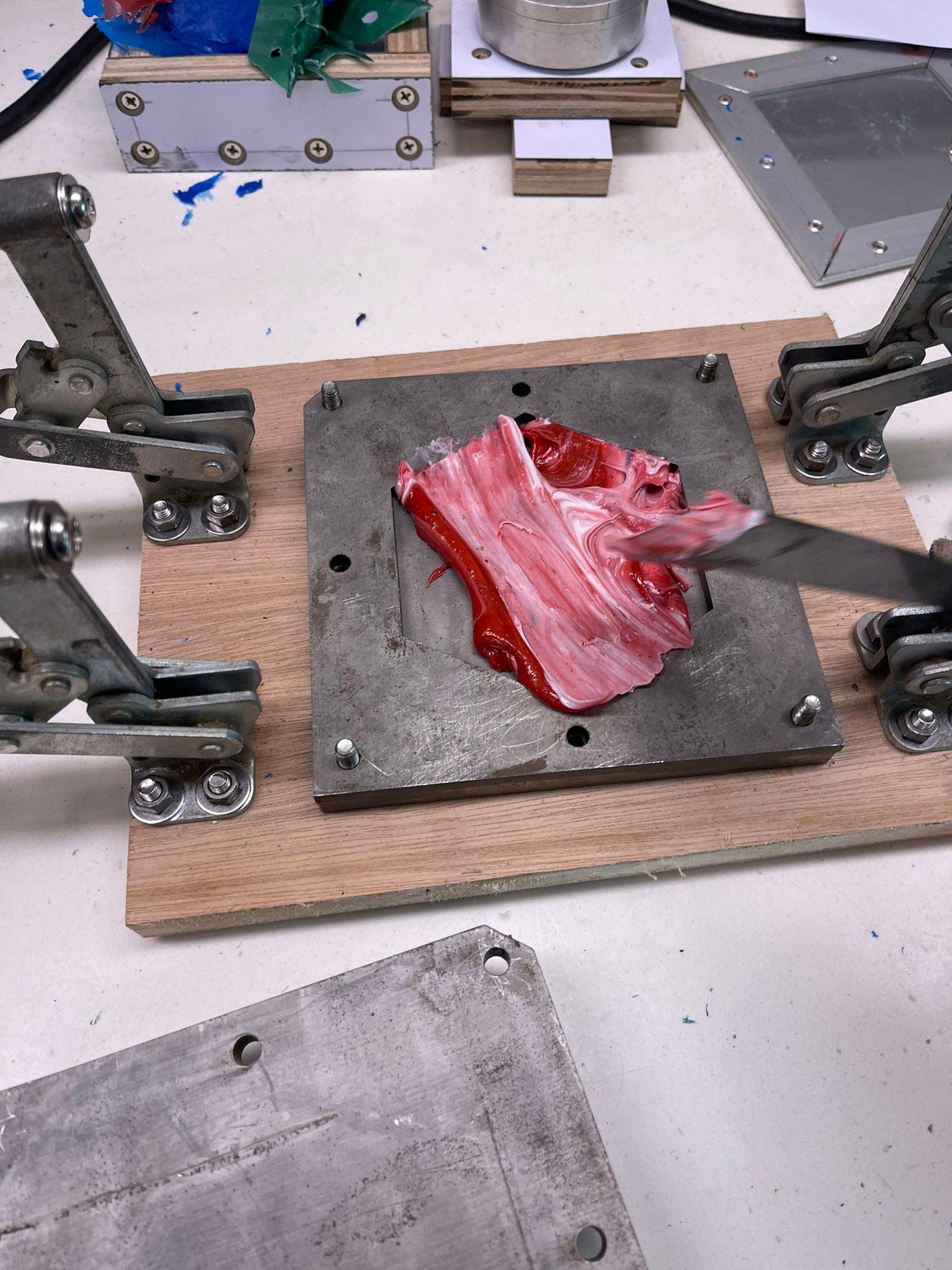.jpeg)
.jpeg)
When fully melted use the spatula to add it to the mould. Fill in the gaps on the sides and clamp it down for cooling. Only remove when it is COMPLETELY cooled (I waited for 1 day) so that it does not shrink.
Filling in Gaps

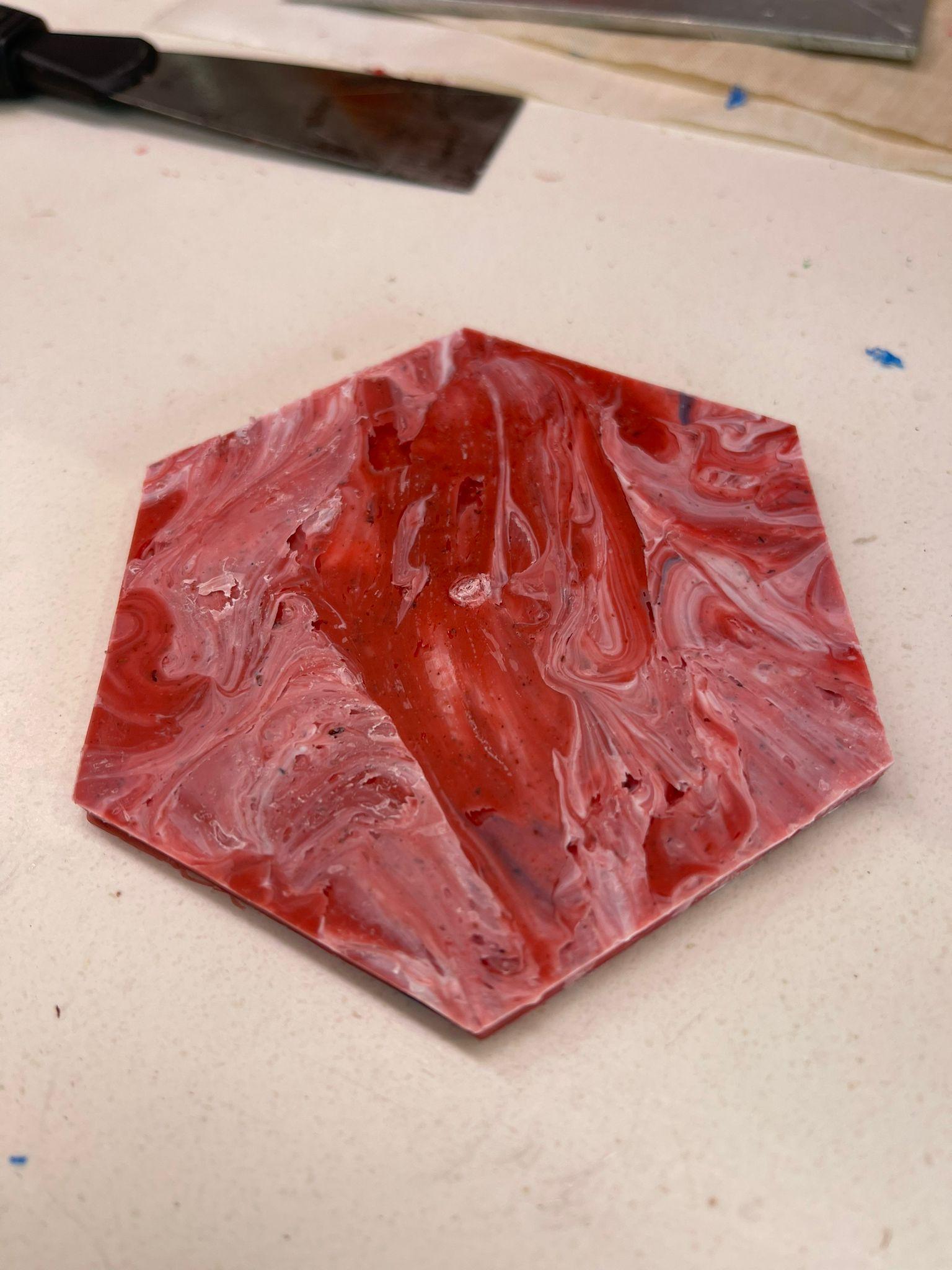.jpeg)
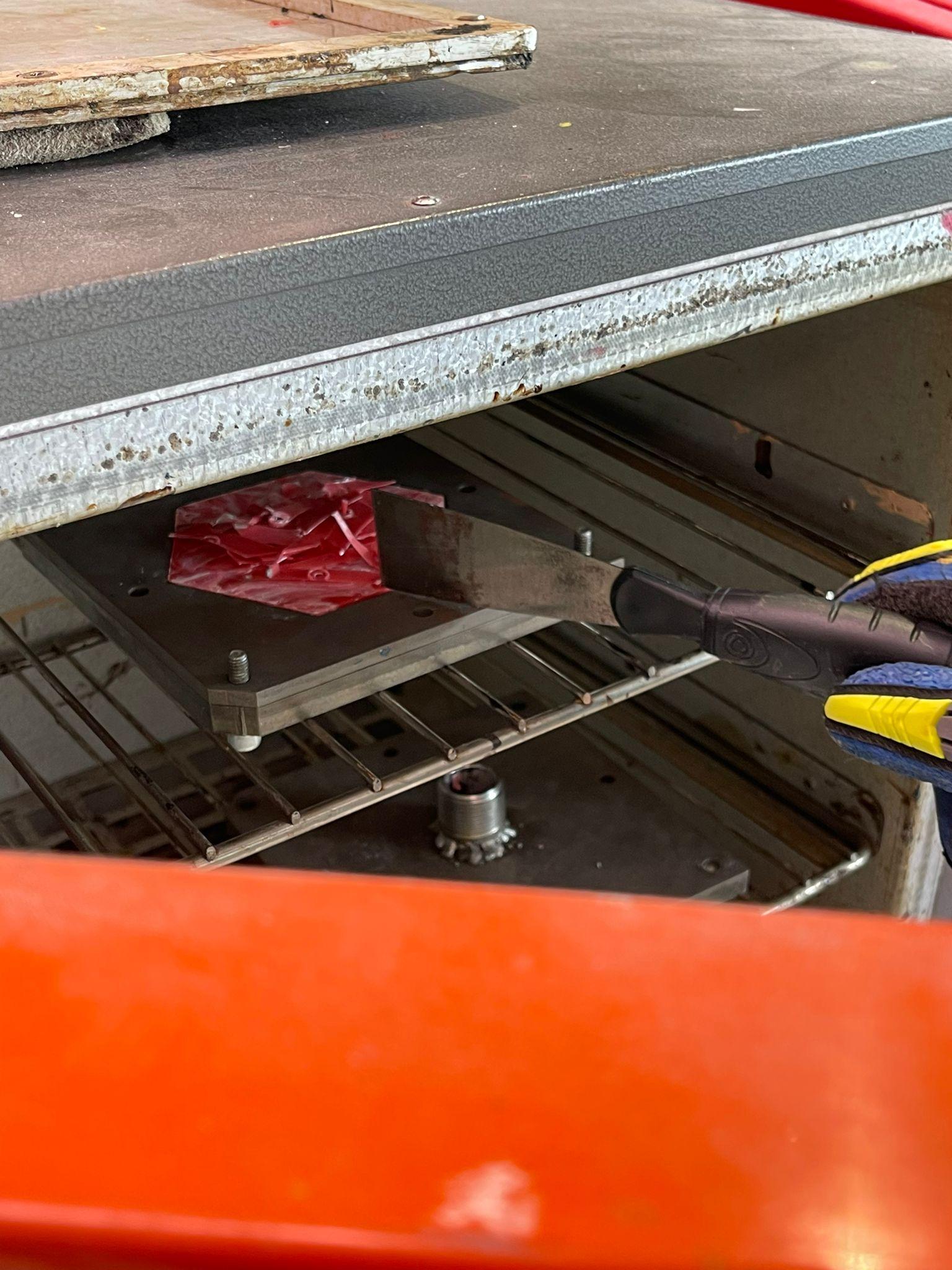.jpeg)
The first product came out with gaps on the faces. I reheated it in the oven and added some scrap HDPE bits to fill in the gaps. I repeated the process and waited for it to cool.
Removing From Mould


When it is cooled remove the top cover from mould. If it is stuck use the spatula/chisel to wedge it off. To remove the excess material use a box cutter or modelling knife.
Sanding


File/sand the extra material off with a metal file or sandpaper. For sandpaper go with 300p+ so that not too much material is removed at a time. The surfaces should feel smooth after sanding.
Final Product
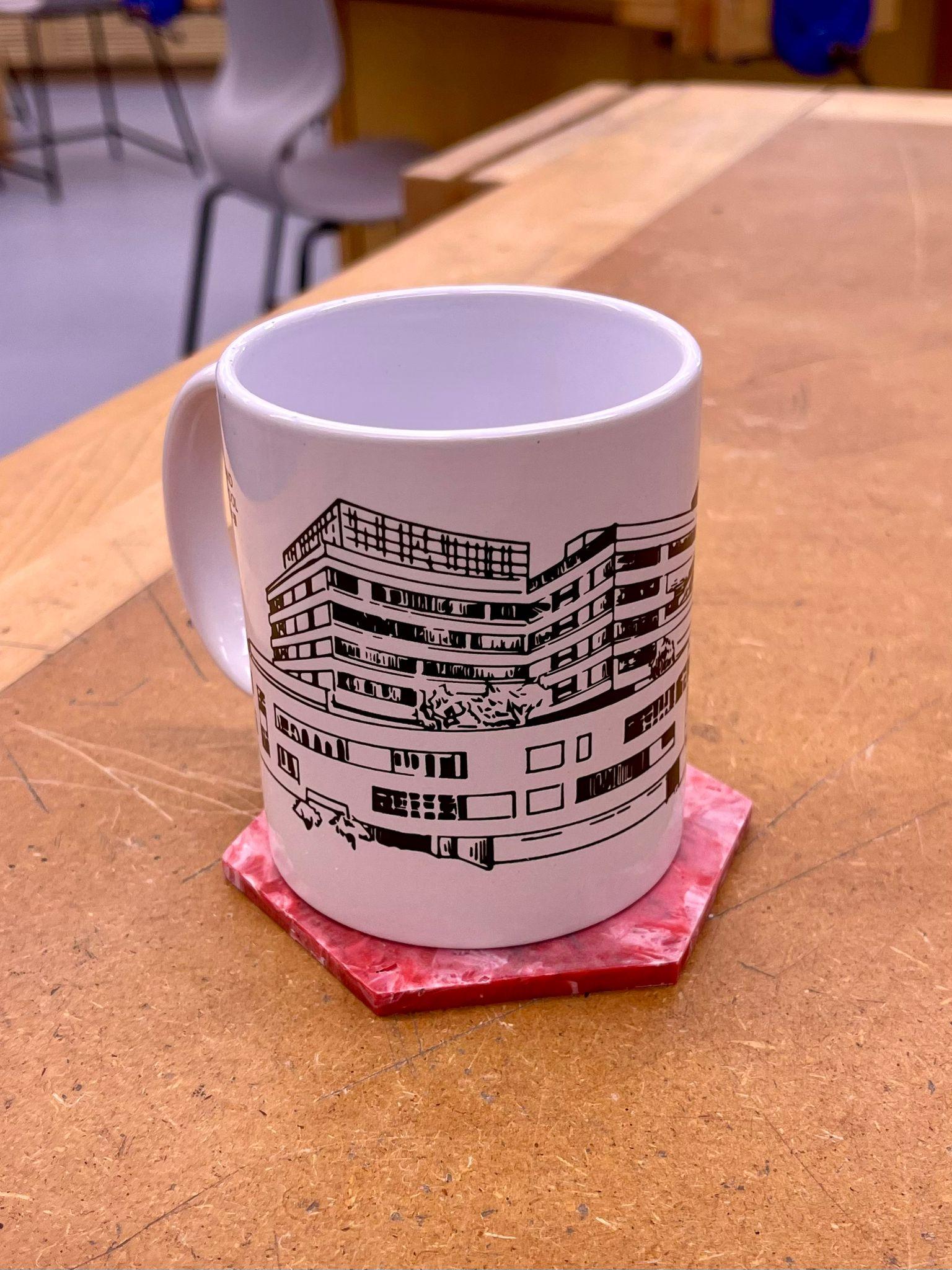.jpeg)

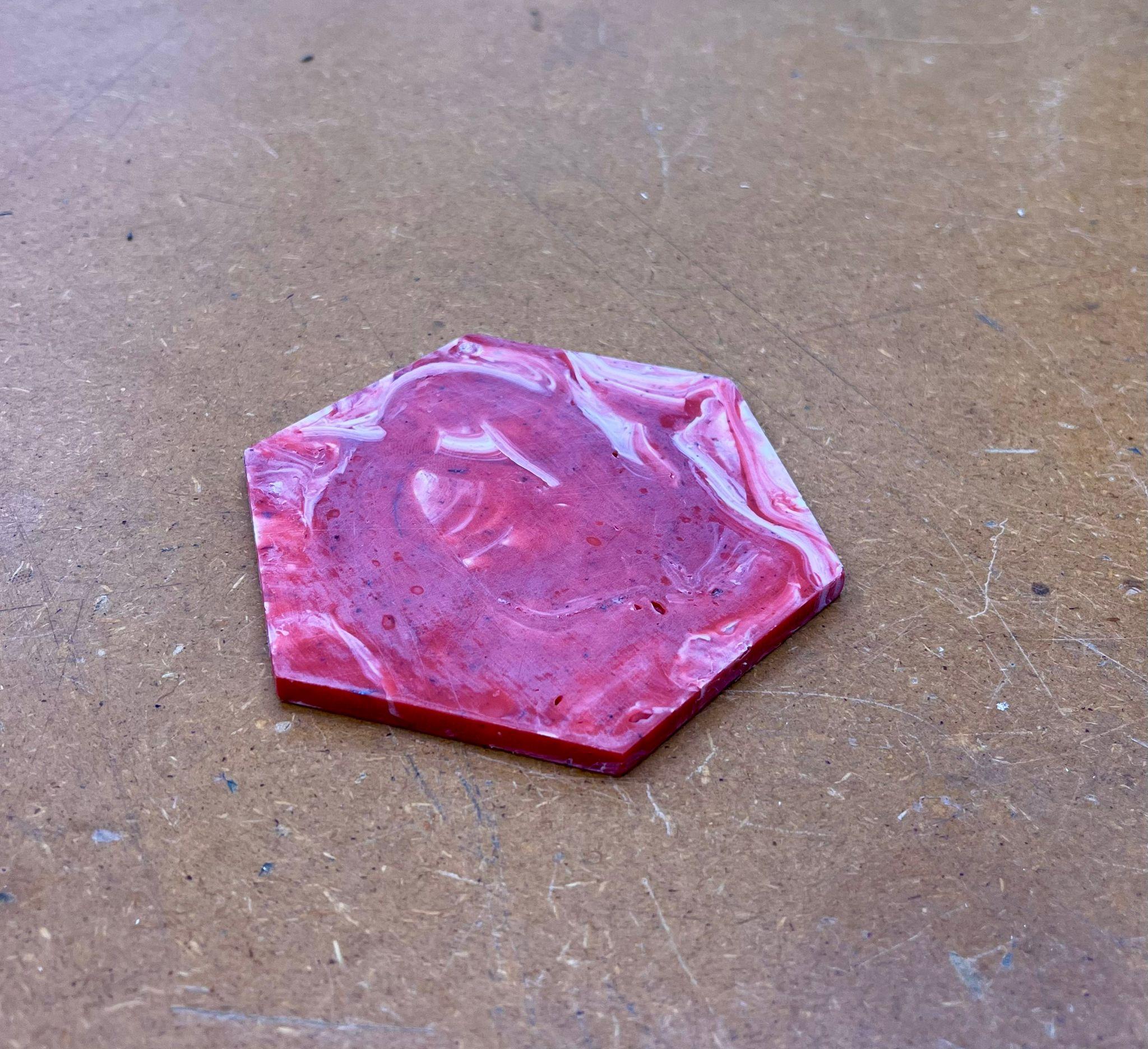.jpeg)

It works well as a coaster as it is insulating and waterproof, which makes it perfect for the job! Other shaped moulds can also be used for different effects!